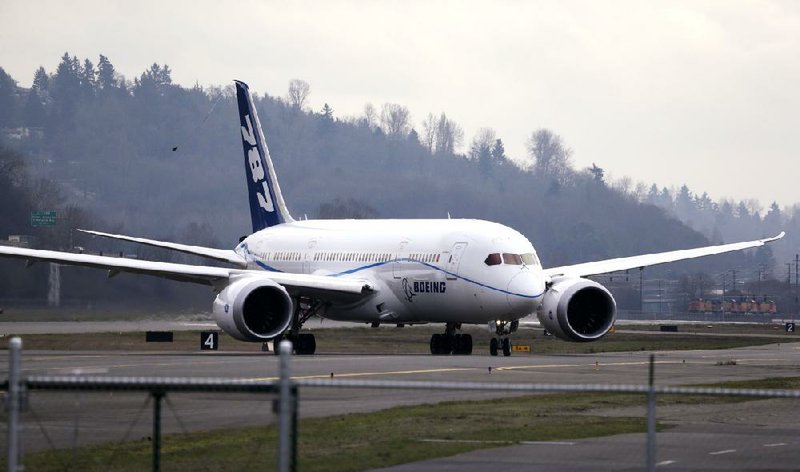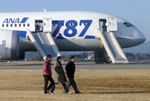Three months after Boeing’s 787 passenger jets were grounded, the Federal Aviation Administration on Friday approved the company’s plans to fix the plane’s batteries, a decision that could allow the planes to return to service within weeks.
Agency inspectors will oversee Boeing’s work in adjusting the planes, the agency said, and both the FAA administrator, Michael Huerta, and Transportation Secretary Ray LaHood said they were satisfied that the proposed changes would eliminate concerns that the plane’s two lithium-ion batteries could burst into smoke or fire.
The changes “will ensure the safety of the aircraft and its passengers,” LaHood said Friday.
The decision was a milestone for Boeing and its innovative jet. Aviation analysts said the battery problems this year had cost Boeing hundreds of millions of dollars and slowed its progress in fielding the planes, which reduce fuel costs by 20 percent and have been in great demand by the airlines. Boeing’s shares rose more than 2 percent Friday, closing at $87.96 a share.
“It’s very positive news,” Richard Aboulafia, vice president of Teal Group Corp., a Fairfax, Va.-based consultant that has done work for Boeing. “It’s a vote of confidence. We’ll see whether it moves forward as planned.”
The 50 jets delivered so far were grounded worldwide after two incidents in January in which the volatile batteries caught fire or emitted smoke. Boeing has said the new battery systems are ready to go, and it would install them on the planes it has already delivered before changing the jets still in production.
Neither the FAA nor the National Transportation Safety Board has determined what caused the batteries to fail.
Boeing’s fix includes more insulation between each of the eight cells in the batteries. The batteries will also be encased in a new steel box designed to contain fire and vent possible smoke or hazardous gases out of the planes.
The FAA’s decision marks the most critical step toward getting the planes back in the air. But flights won’t resume immediately. The agency said next week it would sign off on specific instructions that Boeing is preparing for the airlines on how to handle the battery system. The FAA also will publish a final directive that would effectively lift the grounding order issued in January and allow each plane to return to service as soon as it is modified.
“We are mapping out a return-to-service plan, and we look forward to getting our 787s back in the air,” Christen David, a spokesman for the Chicago based company, said in an email.
United is selling seats for 787 flights starting May 31 for domestic routes including Houston-Denver, and is planning to start service on a Denver-Tokyo route on June 10.
That flight “will depend on successful completion of planned modifications ahead of that date,” David said. United didn’t share details on when its 787s will receive the modifications specified by the FAA.
While the authorities in the United States may be satisfied with the Boeing fix, aviation regulators in other countries must also weigh in and approve the system. About half of all 787s delivered so far are operated by two Japanese airlines.
The Japanese transportation minister, Akihiro Ota, said Friday in Tokyo that Japan’s own assessment of the safety of Boeing’s battery changes was “in its final stages.” Information for this article was contributed by Christopher Drew and Jad Mouawad of The New York Times and Alan Levin and Susanna Ray of Bloomberg News.
Business, Pages 29 on 04/20/2013


